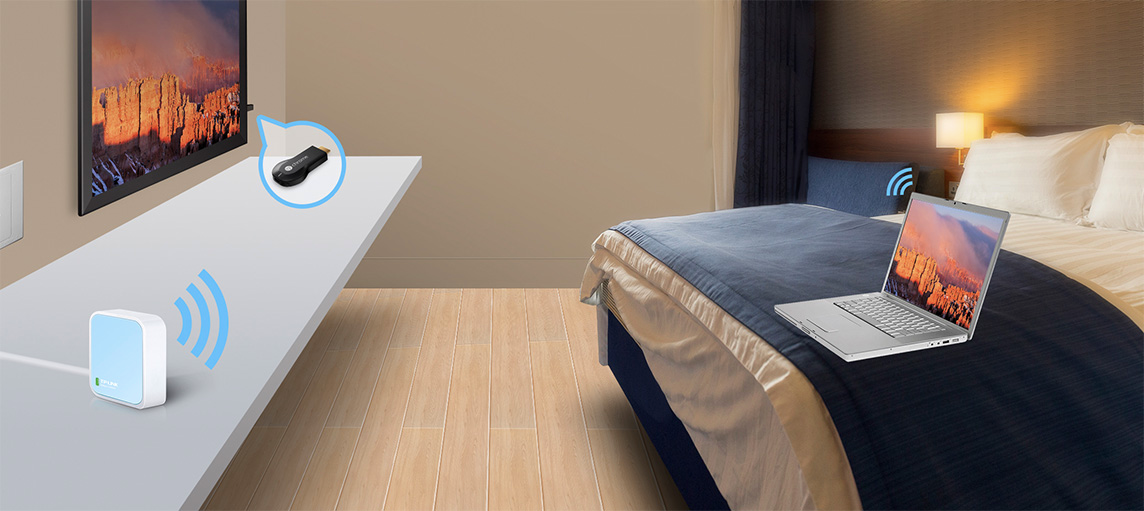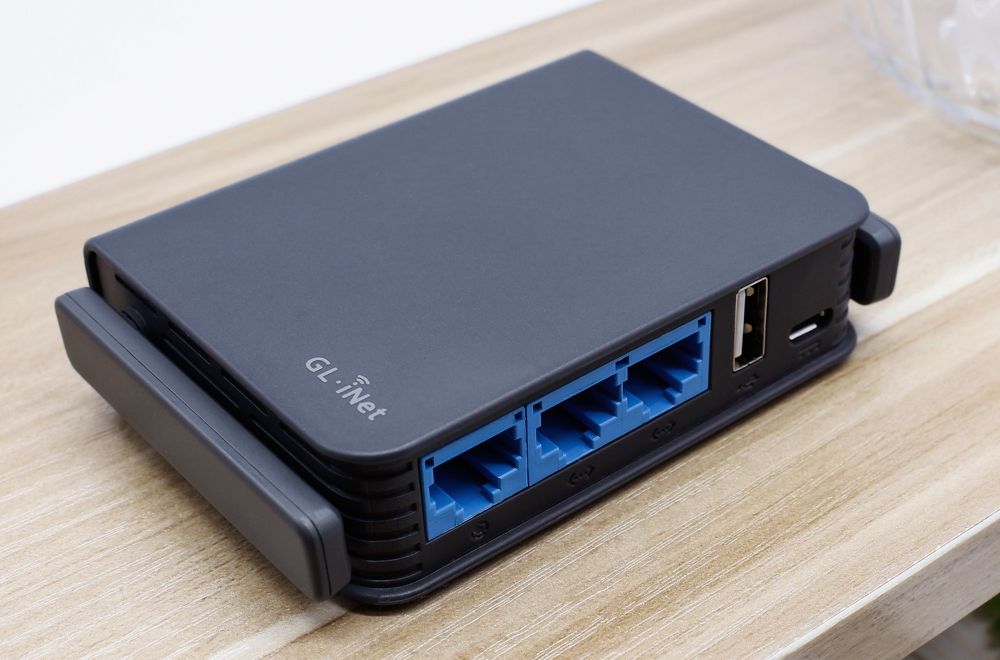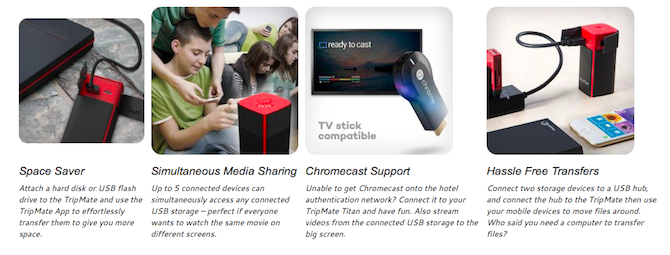Most of us don't travel these days without a full arsenal of gadgets. A phone, a tablet, a laptop, a Kindle, a Chromecast, the list goes on. If that's you, you'll also know that setting them all up on hotel Wi-Fi is a bit of a pain.
The solution is to throw another piece of kit into your bag: a travel router. But what exactly is this, and why do you need one? Let's take a look.
What Is a Travel Router?
Put simply, a travel router is a Wi-Fi router just like the one you've got set up at home, and it works the same way. It's just smaller and more portable, making it more suited for travel.
A travel router is designed to simplify the process of connecting and managing devices on public Wi-Fi networks, whether that means in a hotel, at the airport, or anywhere else.
Most major router manufacturers have travel versions in their product range, including Netgear, D-Link, and more. They can be pretty small, too. The TP-Link Nano routers are almost as small as a credit card, while many other models are comparable in size to a portable phone charger.
Benefits of Travel Routers
The most obvious benefit of a travel router is that it means you don't have to keep adding your devices to the new Wi-Fi networks that you want to use. You keep your devices connected to the travel router instead, and then you only have to connect the travel router to different networks.
This also has the effect of hiding all the devices you've connected to the network—technically, you've only connected one: the travel router. It brings potential security benefits, and it helps you to bypass any arbitrary limits the network owner might have placed on the number of devices you're allowed to connect.
But there are even more benefits.
If the router has an Ethernet port, it can turn a wired internet connection into a wireless one. Travel routers can create a shared network between your connected devices, and many have a USB port that you can use with a flash drive full of media content.
They can also work as wireless extenders that can remove any Wi-Fi dead spots wherever you are. You're unlikely to use this function on the road, but it's a good way to improve Wi-Fi coverage at home.
Drawbacks of Travel Routers
There aren't many downsides, but there are a few things to bear in mind.
First, many travel routers need an external power source, which will limit where you can use them. Second, most need an existing Wi-Fi internet connection to get you online, although some models are available with a built-in SIM card slot for mobile internet connections.
Most importantly, even though they offer some improved security to your devices, they won't protect any data you share over open public Wi-Fi networks. It's important to take the same precautions you would take if you'd connected your laptop to a public network directly.
What to Look for in a Travel Router
When you're shopping for a travel router, you should look out for the same kinds of features you'd look for in a standard wireless router. On top of that, you might also find a few extra features that will help when you're on the road.
Wi-Fi Standard and Band
As with any router, check what Wi-Fi standard it works on. Wi-Fi 6 (802.11ax) is the latest and fastest standard, but if not, then 802.11ac (Wi-Fi 5) is absolutely fine, and 802.11n (Wi-Fi 4) is okay at a push. You should avoid anything older—they will be much slower, more prone to interference, and their age may also suggest they have less modern and less robust security protocols.
Whichever you choose, one that supports the 5 GHz band is preferable. 5 GHz has a smaller range than 2.4 GHz, but it's less susceptible to noise, so it gives you stronger and more reliable signals.
All Wi-Fi 6 routers support 5 GHz, as do those with 802.11ac. Some 802.11n routers are restricted to a single band and only offer 2.4 GHz.
Battery Power
If you want a truly portable solution, then get a travel router that runs off battery power. Unfortunately, many of them don't. If you can't find a suitable model that does, look out for one that can be powered via a USB port. That way, you can plug it into your laptop to use when you're on the road. It's far more convenient than having to search for a power outlet.
Ports
Ethernet and USB ports are essentials in a travel router. With Ethernet, you can turn a wired connection that can only be used with a single device (that has an Ethernet port of its own, like a laptop) into a wireless connection that you can use with multiple devices, including phones and tablets.
A USB port has several uses. The main use is for power: some travel routers can be used to charge other devices. Some routers enable you to insert flash drives or portable hard drives and share the media contents stored in them, just like a NAS system does.
Or you can insert a 4G dongle and share your 4G data plan across all your devices.
Some travel routers have a SIM card that you use for this as well. It's less essential, though, because you can use tethering on your smartphone to do the same job. Just make sure your data plan allows for it.
Multiple Usage Modes
Travel routers have many usage modes that enable them to work in different ways. Not every model will have all of these modes, and they might not always have the same names, so just be aware of that. The five most common modes are:
- AP mode: Creates a wireless access point from a non-wireless internet connection via an Ethernet cable. For use in locations where there's only access to a wired connection.
- Router mode: The router connects to the network, and your devices connect to the router. They remain hidden on the network.
- Repeater mode: The router extends coverage of the existing wireless network. This is a good use for the router when you're at home.
- Bridge mode: Takes the existing network connection and broadcasts it with a separate network name and password, effectively splitting the network in two.
- Client mode: Gives wireless capability to any non-wireless device by way of a cabled connection.
You need to activate and configure each mode separately when you use them. Check out our guide on how to set up a travel router for more.
Is a Travel Router for You?
If you travel a lot and take many gadgets with you, it might be worth throwing a travel router in your bag.
Travel routers are great for getting lots of devices onto wireless networks without any hassle. They're ideal for hotel rooms that only offer wired internet. And if you pick the right model you can fill up a memory stick with your favorite movies and stream them to your devices as well.
You can also use your travel router at home. You can set one up as a wireless extender to remove any dead spots from the furthest corners of your house when you aren't at home. It's even possible to push Wi-Fi coverage out into your garden. Or you can use the router to turn your old printer into a rather more useful wireless version.
Now you just need to decide which travel router to buy.




